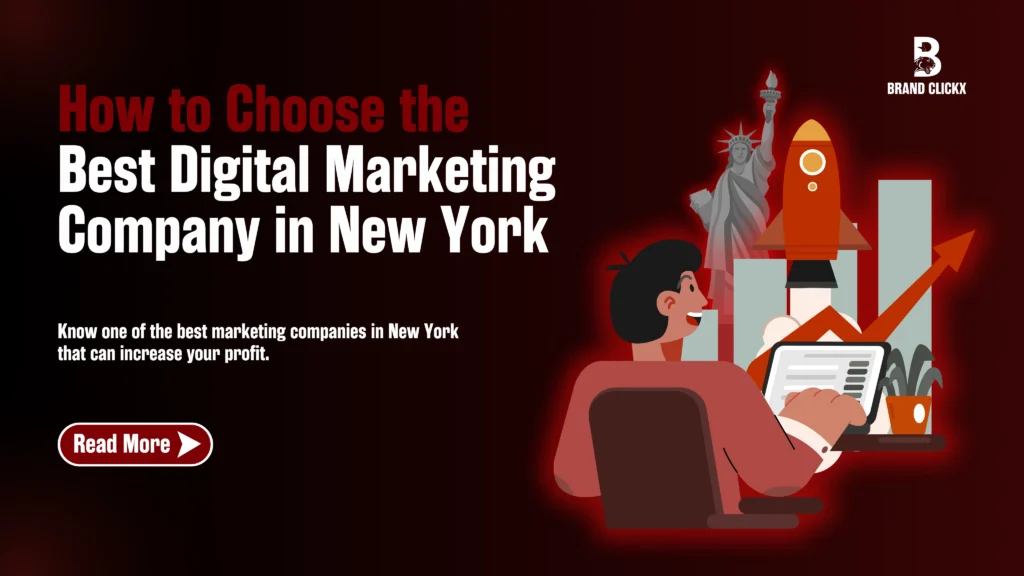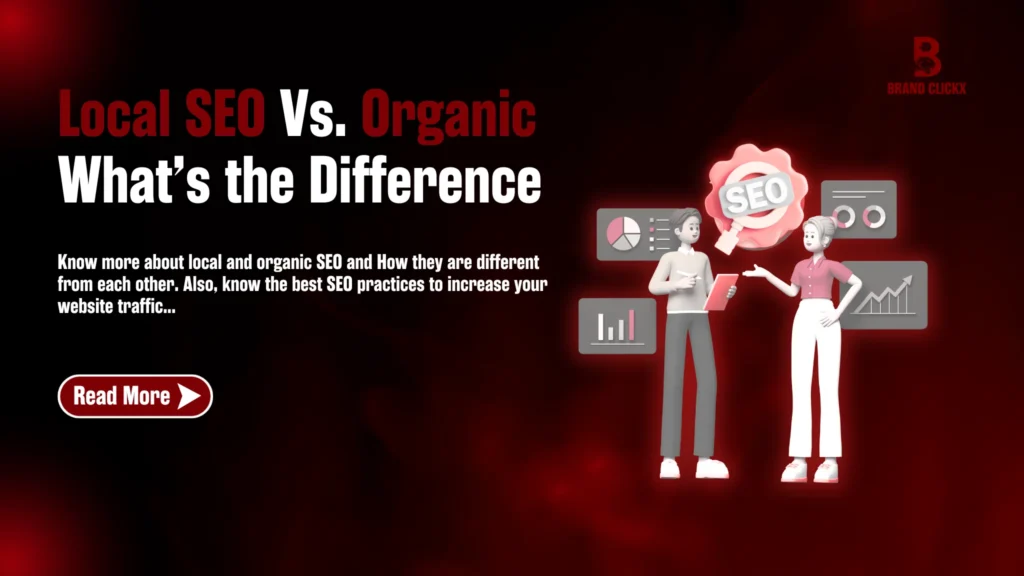Introduction
1. Why On‑Page SEO Matters for Content Creators & Marketers
The Role of On‑Page SEO in Ranking, Visibility & Engagement
Whether you’re writing blog posts, building landing pages, or managing a product site, on‑page SEO techniques determine how your content is understood and ranked by search engines. Good SEO boosts visibility, drives traffic, and improves user experience — directly impacting engagement and conversions.
Without optimized pages, even the most valuable content can remain undiscovered. From keyword placement to structured formatting, every detail matters.
How BrandClickX Approaches On‑Page Optimization
At BrandClickX, we believe that effective on page SEO is not a one size fits all formula. Our approach blends technical precision with humancentered design. We audit each page’s structure, keyword relevance, content flow, and visual hierarchy — ensuring every element serves both user and algorithm.
This philosophy has helped brands across industries scale their visibility and conversions while building long term authority.
2. Essential OnPage SEO Checklist (BrandClickX Style)
Keyword Research & Strategic Placement
Effective content starts with targeting the right terms. Begin with understanding your audience’s search behavior, then select keywords with a balance of volume and intent. At BrandClickX, we advise using a tiered system:
- Primary keywords: e.g., BrandClickX on page SEO
- Secondary keywords: e.g., SEO content optimization, header tags, on page SEO checklist
Best Practices:
- Include primary keywords in your title, H1, first 100 words, and URL.
- Add secondary keywords naturally in H2s, image alt text, and body copy.
Crafting Compelling Meta Tags
Meta tags are often your only chance to stand out on a crowded SERP. Every BrandClickX strategy includes custom meta tag writing, tailored for both relevance and engagement.
Quick Guide:
- Title Tag: 50–60 characters, includes focus keyword early.
- Meta Description: Up to 160 characters, compelling CTA, and keyword inclusion.
Strategic Header Tag Usage
Proper header structure enhances readability and helps crawlers understand your content hierarchy. BrandClickX recommends:
- H1: Used once, should match the page’s main topic.
- H2s/H3s: Structure content and contain related keywords like meta tags, keyword placement, etc.
Optimizing Content for Depth and Readability
Search engines prioritize helpful, original, and thorough content. Avoid fluff and repetition.
Pro Tips:
- Break content into 2–4 sentence paragraphs.
- Use bullet points, quotes, and numbered lists.
- Include real examples, stats, or expert opinions.
Image Optimization: Compression & AltText
Visuals enhance engagement and accessibility — but only when optimized. Every image on a BrandClickXoptimized page includes:
- Descriptive filenames (e.g., seoheadertagsexample.jpg)
- Keywordoptimized alt text
- Weboptimized compression for fast loading
3. Technical and Structural Tweaks
SEO friendly URLs & Site Architecture
URLs should describe the content clearly. For example:
- ✅ /onpageseotechniquesbrandclickx
- ❌ /page?=12245
Quick Tip: Use hyphens, lowercase letters, and avoid stop words (and, the, of).
Internal Linking Best Practices
Internal links help spread link equity and improve crawlability. At BrandClickX, we implement internal links strategically:
- Anchor text uses relevant keywords.
- Link to high authority internal pages like our SEO audit service.
- Avoid linking to unrelated content just to fill space.
Site Speed & Mobile Responsiveness
With Google’s Core Web Vitals in focus, a slow or unresponsive page won’t rank — no matter how optimized the content is.
Speed Boost Tools:
- Compress images using TinyPNG or ShortPixel.
- Minify JS and CSS with plugins like Autoptimize.
- Use a CDN such as Cloudflare.
Schema Markup & XML Sitemaps
Schema enhances how your content appears on SERPs (rich snippets, FAQs, reviews). An updated XML sitemap ensures Google can properly crawl your latest content.
4. Content Optimization Strategies
Incorporating Secondary Keywords Naturally
Use tools like SurferSEO or Clearscope to identify secondary keywords. These help your content rank for multiple queries.
Example:
- Primary: BrandClickX on page SEO
- Secondary: meta tags, SEO content optimization, header tags
Place them in:
- Subheadings (H2/H3)
- Paragraph intros
- Image alt descriptions
Enhancing Engagement with Visuals and Formatting
User retention signals are critical. Enhance your blog or landing page with:
- Comparison tables
- Checklists (like this one)
- Highlighted callouts or CTAs
BrandClickX integrates these UX elements without sacrificing speed or structure.
Optimizing for Content Length and User Intent
A 1600word blog like this one performs well when each section answers a core user question. Don’t pad your content — instead, go deeper with unique examples and insights.
5. How BrandClickX Experts Implement These Tactics
The 5 Step BrandClickX OnPage SEO Framework
- Audit & Research – Analyze existing content, keywords, and competitors.
- Keyword Mapping – Assign terms to specific sections for semantic depth.
- Structural Enhancement – Fix headers, tags, and URL inconsistencies.
- Visual & Technical Polish – Optimize speed, images, and responsiveness.
- Live Testing – Monitor behavior using heatmaps and session replays.
Case Study: SaaS Brand Growth with BrandClickX
Client: A B2B SaaS company struggling with on page optimization.
Challenge: Low rankings despite publishing weekly content.
Solutions Implemented:
- Improved header hierarchy and added focus keyword in subheads.
- Compressed all images and rewrote meta tags with power words.
- Linked orphaned blogs to cornerstone content.
Results:
- 230% organic traffic growth in 90 days
- 57 keywords ranked in the top 10
- Time on page increased from 1:12 to 3:06
6. Measuring Success and Refining Your Strategy
Tracking Rankings, Traffic & Engagement
Tools to Use:
- Google Search Console: Impressions, CTR, crawl issues
- Ahrefs: Keyword rankings, backlink profile
- Hotjar: Behavior maps and scroll depth
Key KPIs:
- Organic traffic growth
- Bounce rate drop
- Top performing URLs
- Dwell time increases
Continuous Testing & Iteration
Set up A/B tests to optimize:
- Meta descriptions
- CTA button placements
- Content formats (listicle vs. howto)
BrandClickX includes this in our postdeployment checklist for every SEO project.
When to Call an Expert vs. DIY
DIY on page SEO is doable for small sites or solopreneurs. However, when dealing with hundreds of pages or competitive industries, professional support saves time and brings results faster.
7. DIY OnPage SEO Tips for Immediate Wins
Quick Checks Using Free or BuiltIn Tools
- Yoast SEO: Pagelevel recommendations (WordPress)
- Google Lighthouse: Speed and accessibility
- Screaming Frog: Crawl diagnostics and broken link finder
LowEffort Adjustments with High Impact
- Add 3–5 internal links to older posts
- Rewrite meta descriptions with focus keywords and emojis (optional)
- Add a CTA button above the fold
Common Pitfalls to Avoid
- Keyword stuffing
- Using H1 tags multiple times
- Ignoring mobile users
- Overoptimizing alt text (keyword spamming)
8. Conclusion & Action Steps
In today’s competitive digital landscape, on page SEO remains one of the most controllable and cost effective tools for marketers and content creators. Unlike offpage strategies that rely on external signals like backlinks or mentions, on page optimization puts the power directly in your hands. When done right, it not only improves your visibility in search results but also enhances the user experience — increasing dwell time, engagement, and ultimately conversions.
At its core, on page SEO is about aligning your content with both user intent and search engine algorithms. From how your content is structured to how fast your pages load, every small detail contributes to how effectively your message is delivered and discovered.
With the evolving nature of Google’s algorithms — including its focus on EEAT (Experience, Expertise, Authoritativeness, Trustworthiness) — brands must take a proactive, strategic approach to content optimization. This is where proven frameworks, like those offered by BrandClickX, can make all the difference.
Key Takeaways:
1. Use Structured Headings with KeywordRich Phrases
Proper use of H1, H2, and H3 tags helps both users and crawlers navigate your content. Ensure each section is clearly labeled and includes relevant keywords naturally.
2. Keep Content Scannable and Engaging
Break up large paragraphs, use bullets and visuals, and write with clarity. Attention spans are short — your format should encourage reading, not skimming past.
3. Optimize Every Asset, from Meta Tags to Internal Links
No element should be overlooked. Title tags, meta descriptions, URLs, images, alt text, and even file names all contribute to SEO performance. Make each count.
4. Focus on User Intent Over Just Keywords
Don’t stuff terms into your content. Instead, match the tone, depth, and structure of topranking content — and aim to do it better. Add unique insights, visuals, or tools when possible.
5. Run Periodic Audits to Identify New Opportunities
Search engines evolve, and so should your SEO strategy. Use audit tools regularly to detect broken links, outdated content, keyword gaps, and missed opportunities.
6.Leverage Expert Support When Needed
Not every fix has to be DIY. If you’re targeting competitive keywords or managing high volume content, partnering with SEO experts like BrandClickX can yield faster, scalable results.
Frequently Asked Questions (FAQs)
What are the most important on page SEO techniques?
The most effective on page SEO techniques include:
- Keyword optimization (titles, headers, content)
- Meta tag writing (title & meta descriptions)
- Optimized header tag structure (H1–H3)
- Image compression and alt text
- Internal linking and schema markup
At BrandClickX, these are customized for every client’s content and business goals.
How does keyword placement affect page SEO?
Keyword placement is critical for signaling relevance to search engine. Focus keywords should be placed:
- In the title tag and H1
- Within the first 100 words
- In H2s and image alt attributes
Proper keyword placement helps your content rank higher for targeted queries.
What is the difference between on page and off page SEO?
Onpage SEO refers to optimizations made within your website, such as content, tags, and internal linking. Offpage SEO focuses on external signals like backlinks and social mentions. BrandClickX offers strategies for both, tailored to your business.
How do I use an on page SEO checklist?
An on page SEO checklist guides you through essential tasks:
- Optimize meta tags and headers
- Use the target keyword naturally
- Add internal and outbound links
- Ensure fast load speeds
- Include schema markup
Download our full checklist here or contact us for a free audit.
5. Does BrandClickX offer custom on page SEO services?
Yes! BrandClickX’s on page SEO services are tailored to your business goals. Whether you’re a content creator, marketer, or brand owner, we provide audits, content optimization, keyword strategy, and technical fixes.
The most effective on page SEO techniques include:
- Keyword optimization (titles, headers, content)
- Meta tag writing (title & meta descriptions)
- Optimized header tag structure (H1–H3)
- Image compression and alt text
- Internal linking and schema markup
At BrandClickX, these are customized for every client’s content and business goals.
Keyword placement is critical for signaling relevance to search engine. Focus keywords should be placed:
- In the title tag and H1
- Within the first 100 words
- In H2s and image alt attributes
Proper keyword placement helps your content rank higher for targeted queries.
Onpage SEO refers to optimizations made within your website, such as content, tags, and internal linking. Offpage SEO focuses on external signals like backlinks and social mentions. BrandClickX offers strategies for both, tailored to your business.
An on page SEO checklist guides you through essential tasks:
- Optimize meta tags and headers
- Use the target keyword naturally
- Add internal and outbound links
- Ensure fast load speeds
- Include schema markup
Download our full checklist here or contact us for a free audit.
Yes! BrandClickX’s on page SEO services are tailored to your business goals. Whether you’re a content creator, marketer, or brand owner, we provide audits, content optimization, keyword strategy, and technical fixes.



